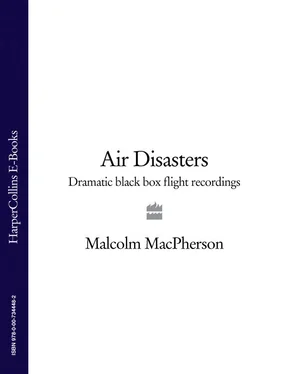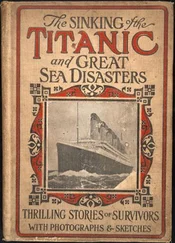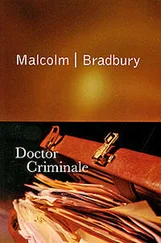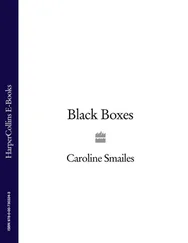Un safety will be with us in the air for a long time to come. Flying in North America and Europe may have reached a point of statistical perfection but we will still have the Third World, which is where airlines are crashing today.
The imbalance in safety between different parts of the world is stark.
In March 2007, Russian Airlines UTair Flight 471, a Tupolev Tu-134, which crashed while attempting to land at Samara’s Kurumoch Airport, in Russia, killing six of the fifty-seven passengers on board, was only one of two fatal commercial passenger aircraft accidents that did not occur in the Third World or involve an aircraft registered there . (The worst aviation disaster of 2007 was the crash of the Brazilian TAM Linhas Aeéreas Flight 3054, an Airbus A320 that overran the runway at Congonhas-Saão Paulo International Airport in Brazil, killing 187 on board and 12 on the ground.) In the Samara incident the aircraft was a Tupolev; in case you did not already know, boarding any Tupolev anywhere, flown by any airline, whatever its destination, is guaranteed to be the thrill of a lifetime. My wife and I flew in one a few years ago from the Bahamas to Havana, Cuba. The subsequent vacation, the cigars, music, food and sun and rum were just a pleasant afterthought to the joy of having landed alive.
As in so many other aspects, Africa, in terms of air safety, has become a special case, with the European Union banning most non-national African airlines from landing at EU members’ airports. Last year the Congo saw more fatal commercial air crashes than any other country. Four cargo aircraft and two Let 41 passenger flights suffered fatal crashes. One of these accidents involved an Africa One plane which came down in Kinshasa, killing so many people on the ground that no precise number of casualties was ever given. The downward trend in the safety of African airlines is long and continuous. Even as far back as the early 1970s, flying in Africa required a cavalier attitude. I remember when, based in Kenya with Newsweek magazine in 1973, I was aboard an Air Zaire flight from Kinshasa to Nairobi, and, to my surprise, a beautiful young woman who had boarded the Boeing 707 aircraft in Kinshasa simply vanished soon after takeoff. I know because I looked for her. A week later I ran into her at a Nairobi dinner party. She laughed as she recalled the thrill of the flight, telling me that, although unqualified, she had piloted long stretches between Bujumbura and Entebbe while sitting in the captain’s lap swilling goblets of champagne.
To change this direction in African air safety, the American NTSB and others are working ‘aggressively’ to help African nations. At first glance the continent would appear to extend beyond the NTSB’s mandate, and indeed it does…and yet doesn’t. African governments and private airlines based in Africa buy and fly American-made aeroplanes and helicopters, which gives the NTSB an inherent interest. ‘For commercial purposes, we don’t want them crashing Boeings’, a member of the NTSB told me. ‘We want them buying Boeings. If there are crashes, the African governments or airlines might say that the plane was no good. “Next time we’ll buy Airbus”.’ This was the line the Egyptian government took when one of EgyptAir’s pilots committed suicide in October 1999 by crashing a Boeing 767 into the Atlantic Ocean. The Egyptian government alleged that the 767’s flap system was to blame. It wasn’t. ‘That was not good for business,’ the same NTSB representative told me.
Air safety in Africa can also have serious political ramifications. In August 2005, John Garang, the newly sworn in vice president of the Sudan, was killed when his helicopter crashed during an official trip to Uganda. Soon after, the BBC reported ‘large-scale’ rioting in the Sudanese capital Khartoum, with supporters of Mr Garang battling armed police. They inferred from the news that Sudanese enemies in positions of authority had ordered his killing. This suspicion was perhaps inspired by the shooting down of a plane in 1994 that was carrying Rwanda’s President Habyarimana, an incident that served as a flashpoint for the subsequent genocide. Immediately after the 2005 crash in Uganda, the US Department of State dispatched one of the NTSB’s seasoned investigators, Dennis Jones, to the crash scene. His conclusion that foul play was not involved may have prevented a bloody civil war.
For readers unfamiliar with CVR transcripts, an explanation is in order. The transcripts are taken from recordings of sounds of interest to investigators after crashes. These are inter-cockpit voices, engine noises, stall warnings, landing gear extension and retraction, and all sorts of other clicks and pops. Investigators can often determine from these noises parameters such as engine rpm, systems failures, speed, and the time at which certain events occur. The CVR tapes also record communications with air traffic control, automated radio weather briefings and conversation between the pilots and ground or cabin crew.
All over the world these recordings are contained in boxes carried in the parts of commercial aircraft most likely to survive a crash, such as the tails. These boxes are known colloquially as black boxes; there is one for cockpit voice recordings (CVR) and another for flight data recordings (FDR). In the cockpit, the crews’ voices and other sounds are detected by ‘cockpit area microphones’,or CAM, usually located on the overhead instrument panel between the two pilots. The older analogue CVR units use a quarter-inch magnetic tape as a storage medium on a thirty-minute self-erasing loop. Newer models use digital technology and memory chips for up to two hours of self-erasing recordings. The boxes contain an underwater locator beacon (ULB), which activates a ‘pinger’ when the recorder is submerged in water and transmits an acoustical signal on 37.5 KHz that a special receiver can detect at depths of 14,000 feet. The boxes can sustain a crushing impact of 3400 gravities of force. One even sustained 9000 gravities after the crash in 1987 of a hijacked Pacific South-west Airlines flight in California.
The cockpit voice recorder (CVR)
After an accident occurs and the black boxes are located at the accident site they are pulled from the wreckage and quickly delivered to a laboratory where they are opened and examined. In America that examining agency, the NTSB, is located at L’Enfant Place, Washington, DC. To listen to the tapes a CVR committee is formed from the representatives of the airlines, the manufacturers of the aircraft and of its engines, pilots’ unions and the NTSB. This committee compiles a written transcript of the CVR to be used during the investigation, and examples of such transcripts, edited by the NTSB investigators, are what you are reading, for the most part, in this book. FAA’s air traffic control tapes, with their associated time codes, are used to help determine the local standard time of one or more events during the accident sequence. The transcripts, containing all pertinent parts of the recording, are edited. Anything other than factual information is removed in the knowledge that the transcripts very often contain highly personal and sensitive verbal communications inside the cockpit.
| Time recorded |
30 minutes continuous, 2 hours for solid-state digital units |
| Number of channels |
4 |
| Impact tolerance |
3400Gs/6.5 ms |
| Fire resistance |
1100 deg C/30 min |
| Water-pressure resistance |
submerged 20,000 feet |
| Underwater locator beacon (ULB) |
37.5 KHz; battery has shelf life of six years or more, with thirty-day operation capability upon activation |
I have chosen the following twenty-one transcripts on the basis of their variety and drama. I make no apologies for what to some might seem ghoulish. In editing these transcripts for publication I have not tried to ‘characterize’ the crew members whose voices are taken directly off the CVR tapes. I do not want these transcripts to read like an airport novel. Whether the captain of the downed aircraft was kind to animals, was married with children, etc—none of this seems to me to be relevant in an accident; the same goes for the passengers whose lives are equally unknown to me. I have tried to give readers a context—of weather, time, numbers of passengers, sights and sound. I have edited some of the crews’ dialogue for clarity and I have qualified some of the pilots’ jargon with bracketed definitions that laymen better understand. I want readers to know that I am not a pilot. I have never been a pilot. I have not edited this book for pilots or for other aviation experts who will almost certainly be better served reading the original versions of these transcripts.
Читать дальше












